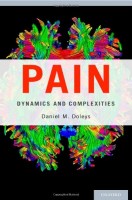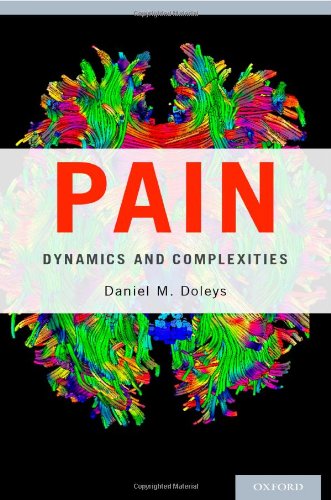 Editors: Daniel M. Doleys, PhD
Editors: Daniel M. Doleys, PhD
Publisher: Oxford University Press – 286 pages
Book Review by: Nano Khilnani
Pain is experienced by just about everyone, but at least 30 percent of the United States’ population, or about 100 million people, will at some point in their lives, either develop chronic pain, or have already done so. This number is unbelievable to me.
The detrimental economic consequences of treating and managing pain are very high. Dr. Doleys writes that not only is the estimated health care cost from $260 to $300 billion, but the loss of work productivity cost ranges from $299 to $335 billion (2010 dollars).
But you’ll be glad to learn that pain research and treatment have reached a place of welcome change. In this book, Dr. Daniel M. Doleys provides you useful, new, and unusual information and insight. He calls for using this newly-discovered knowledge – as discussed in this book – in changing the way most health care professionals view and treat pain. Specifically, he:
- Points out the absence of data showing reduction of the incidence, development, and persistence of pain in the general U.S. population despite the large increase in the number of pain therapies and clinics that offer them.
- Calls for a fundamental shift in the way we view pain.
- Shows us the complex nature of pain and its various causes.
- Combines neuroscience, psychology, and philosophy of science in reviewing the history of pain and outlining current concepts and theories on the mechanisms involved in the experience of pain.
- Summarizes basic and clinical research in the areas of: empathy and pain; genetics and pain; neonatal pain; and psychogenic pain.
- Highlights the notion of pain as a disease process rather than as a symptom.
- Emphasizes the growing understanding of the brain as the intimate pain generator, despite continued interest in activation of the peripheral nociceptive system as a determining factor in the experience of pain.
- Describes the potential benefit of incorporating some of the concepts from systems and quantum theory into our thinking about pain.
The coverage of this book is quite extensive, and if you are one who wants to broaden and deepen your understanding of, and / or enhance the treatment of pain in your patients, we urge you to read this book closely, and make notes of information new to you. We provide you first an overview of what is contained in this important book on the subject by listing below the titles of its chapters:
- Introduction
- The History of Pain
- Pain Mechanisms and Types
- Pain and the Brain
- Pain Processing: Some Theories
- The Complexities of Measuring Pain
- Psychogenic Pain: Is It a Useful Concept?
- Pain as a Disease
- Pain in Neonates and Infants
- Pain and Religion
- Empathy and Pain
- Genetics and Pain
- Pain and Consciousness
- Pain: Present and Future Considerations
Several definitions of pain are offered in this book, but the one that seems most easily measurable to us is this one: “Pain is than sensory experience evoked by stimuli that injure or threaten to destroy tissue, defined introspectively by every main as that which hurts.”
Each chapter of this fact-filled book begins with an Introduction which briefly describes the scope of the subject being presented in that chapter. The main topics relevant to the title of the chapter are then taken up. The chapters end with a Conclusion and a list of relevant References. Fine, detailed illustrations, charts, and tables are provided in the chapters to enhance your understanding of the various topics.
An important chapter in this book is No.6, The Complexities of Measuring Pain. In it Dr. Doleys points out that blood pressure, heart rate, respiration, and temperature are typically measured by a health care professional – usually a nurse or physician – at the beginning of a medical examination. In recent years, pain measurement, described as the “fifth vital sign,” has been added to this list. In the past, only when the patient reported or complained of having pain, did the examiner measure its intensity and frequency of occurrence.
The level of pain in a patient can be measured by quantitative and qualitative approaches. The most basic quantitative approach to assessing pain is through the “controlled application of mechanical, electrical, thermal, or chemical stimuli – experimentally-induced pain (EIP).” The author writes that with the EIP method, typically used in a laboratory setting, “inter- and intraindividual differences in pain threshold and tolerance can be established.”
But the validity of the results obtained through the EIP method is doubtful. The author explains: “However, the relevance of EIP in the laboratory to pain experienced in a naturalistic setting, in animals compared to humans, and in healthy individuals compared to that in the clinical population, remains questionable.”
Two other methods of measuring pain are the NRS and VAS scales. With these methods, the patient uses a 0-10 numerical rating scale (NRS) or the visual analogue scale (VAS).
The reader is well served by studying this topic – Approaches to Measuring Pain – closely, as well as others in this chapter, namely:
- Medical Tests
- Psychological Factors
- Special Populations: Neonates, Infants, Children, Older Adults, Patients with Brain Damage or in Coma
- Narratives
- Nonlinearity and Pain
- Systems Approach
All in all, this is an excellent book on pain, with a lot interesting and unusual information.
Daniel M. Doleys, PhD is the director of The Doleys Clinic and Pain and Rehabilitation Institute in Birmingham, Alabama. He has held this position since its inception in November, 1979. He received the Distinguished Research Psychologist Award from the Alabama Psychological Association and the Excellence in Research and Clinical Care Award from the Southern Pain Society. His current research and clinical activities involve the application of behavioral and psychological approaches to the assessment and treatment of chronic pain.






